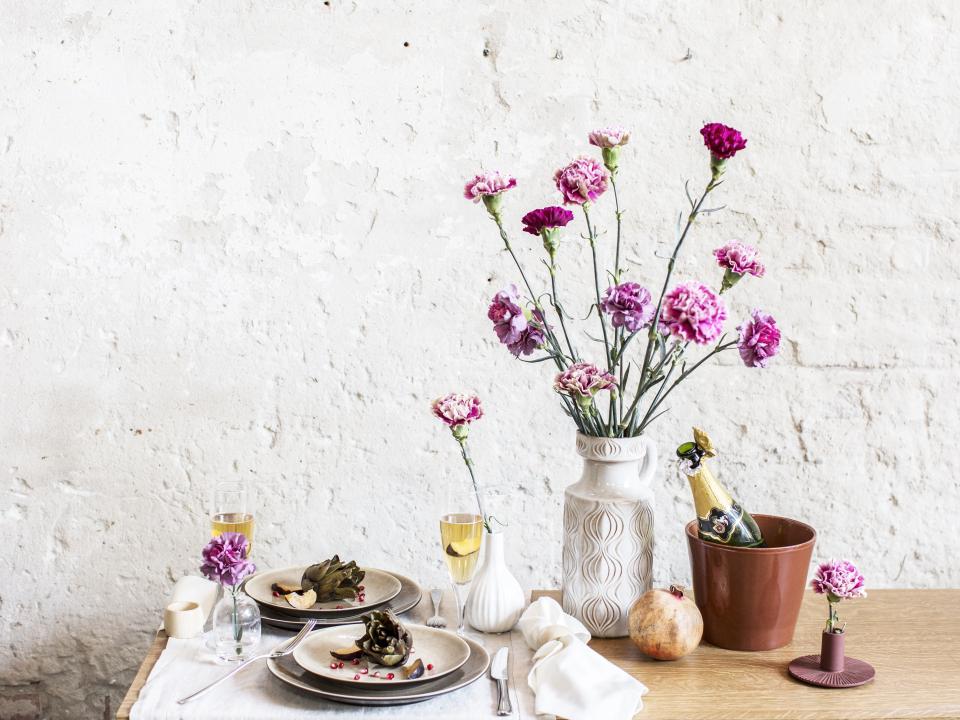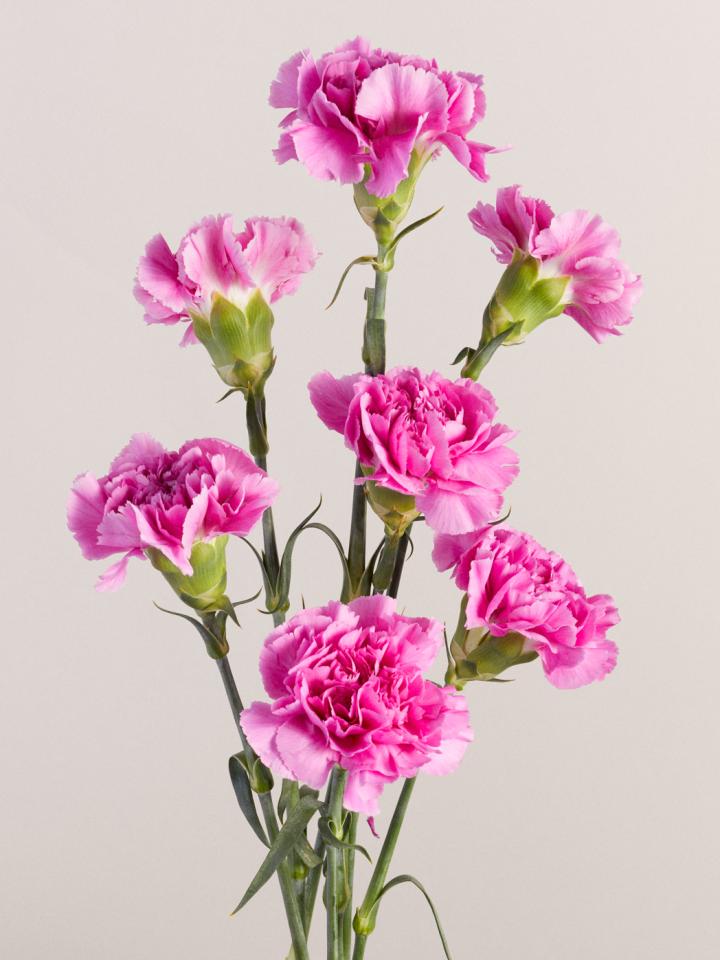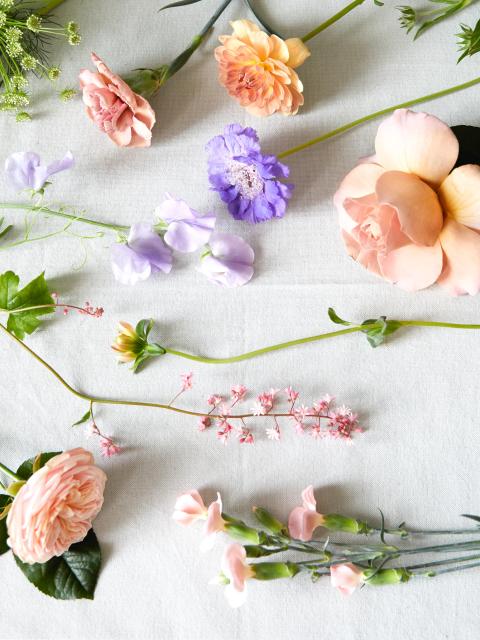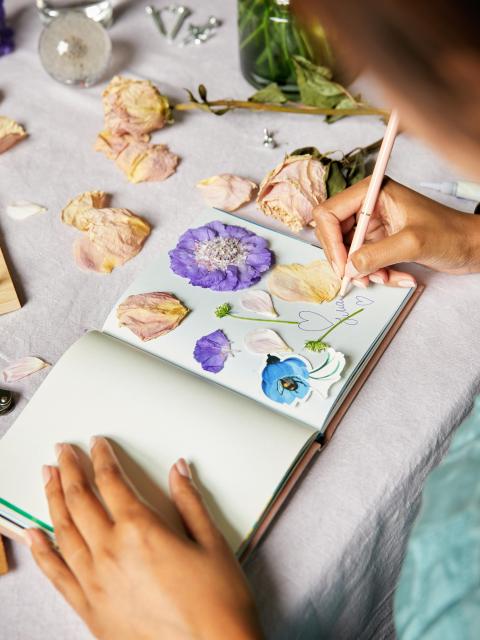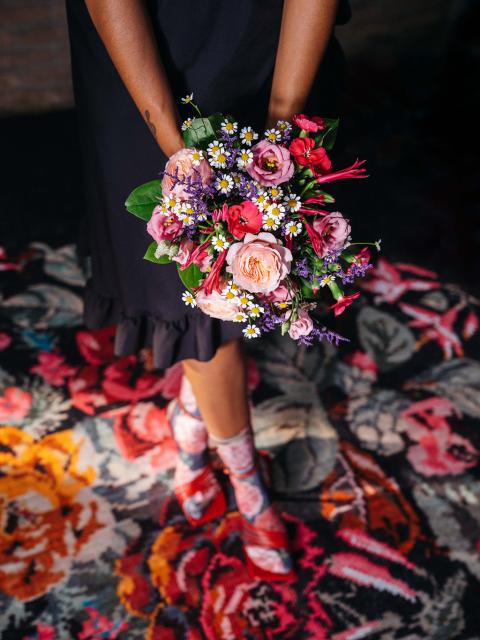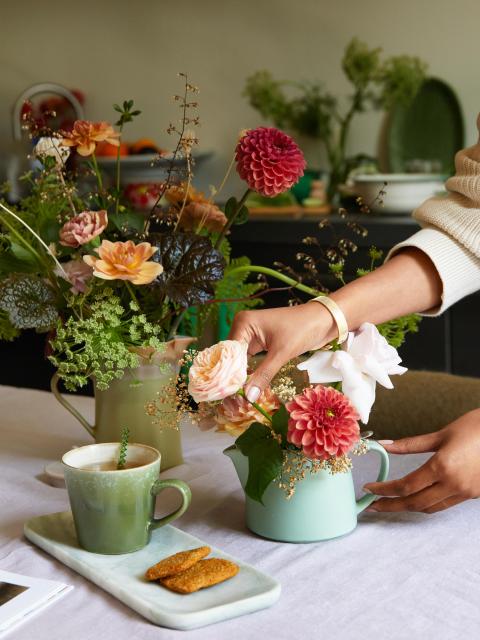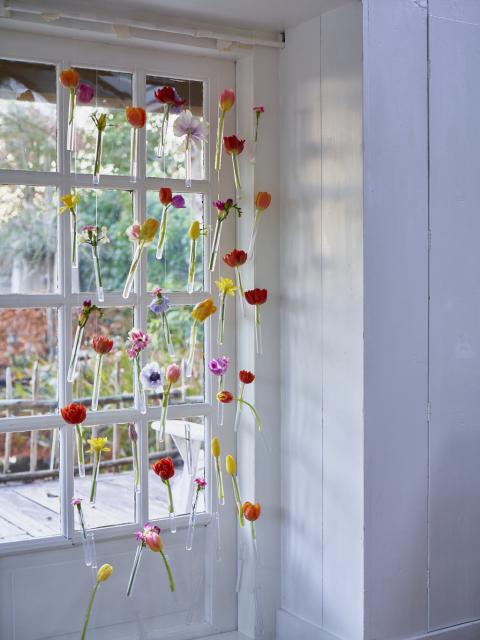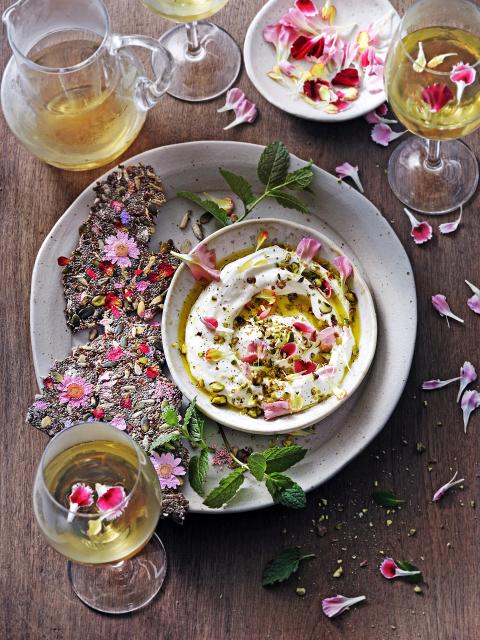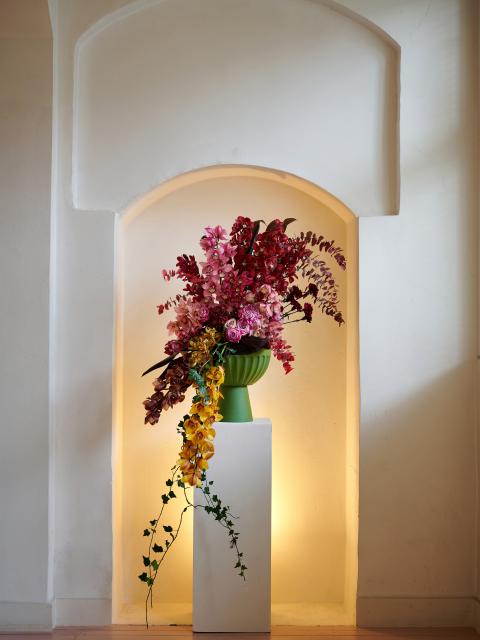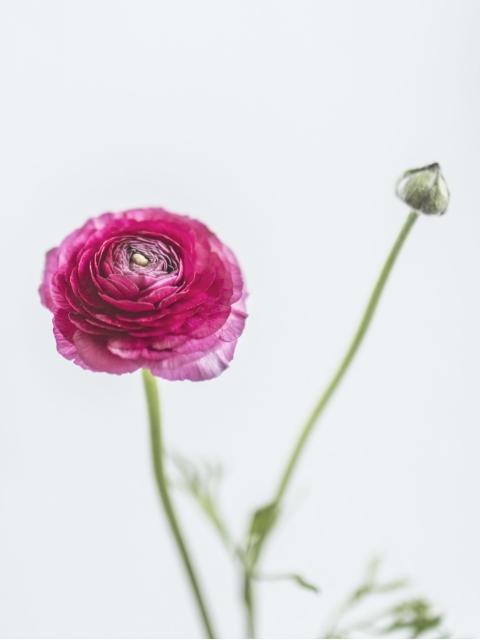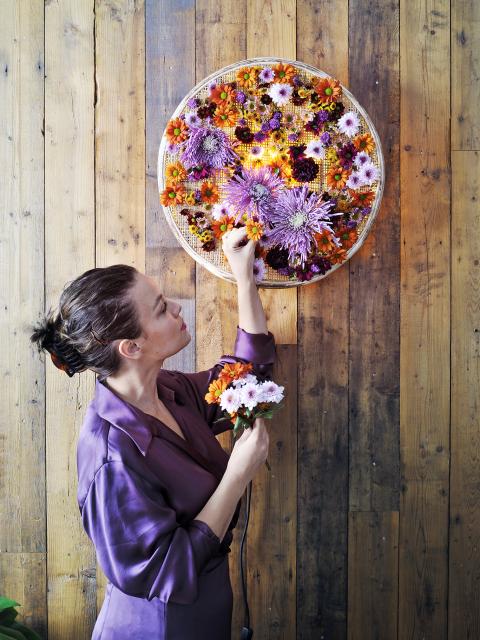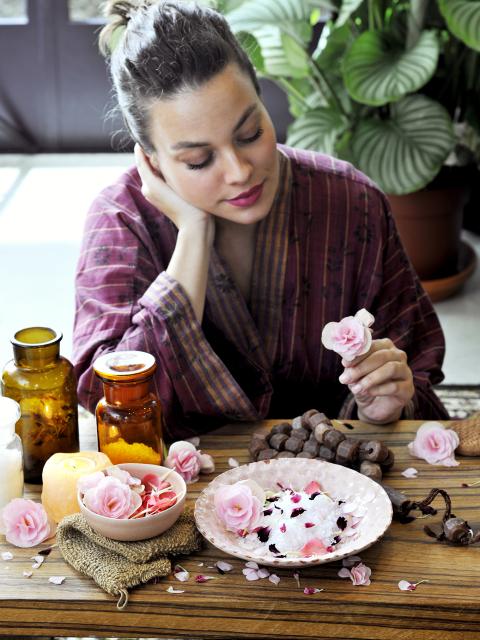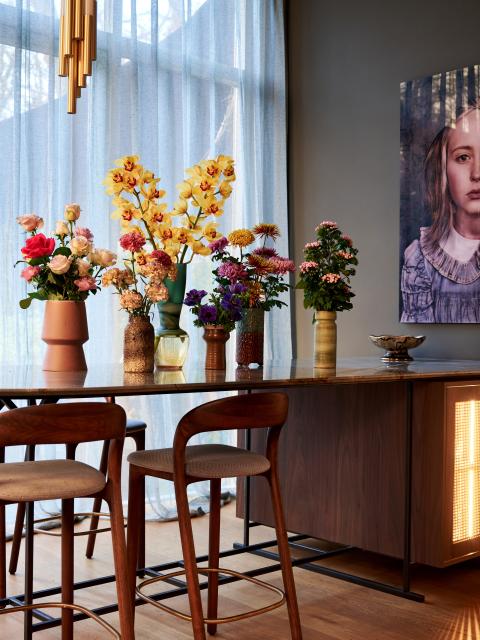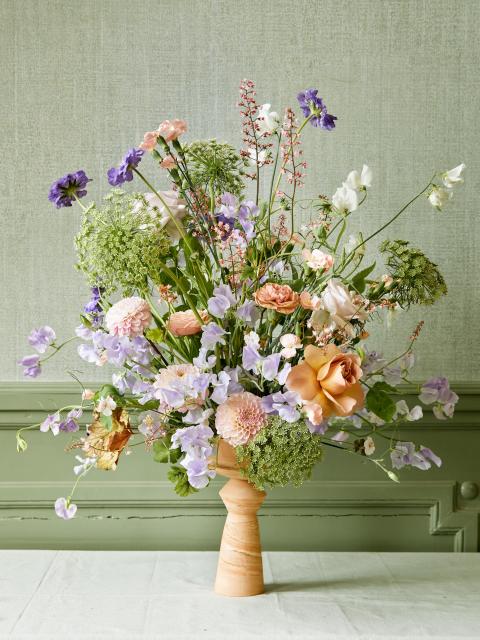CARNATION: CHARACTERISTICS AND FLOWERs
Green, deep purple, dark red, fluorescent yellow, champagne, soft orange, salmon pink, white or combinations of colours, the carnation offers you many options for colourful splendour. But that's not the only special thing about this flower. The carnation has many forms: there are carnations with several layers of petals, serrated petals and fringes. Many carnations also have a delicious, slightly sweet fragrance! No wonder, then, that the carnation is a wonderful addition to any vase. Garden carnations flower between May and September, depending on the variety. Carnations as cut flowers are available almost year-round at florists.
The botanical name for carnation is Dianthus. This is derived from dios (divine) and anthos (flower). Carnations were used in Greek, ceremonial occasions, which explains the name. Carnation belongs to the carnation family (Caryophyllaceae), which also includes flowers such as gypsophilia, sweet william and silene.
CARNATION: A MAGNETIC GARDEN PLANT FOR BEES AND BUTTERFLIES
Want more butterflies and bees in your garden? Then planting carnations is an excellent idea! The nectar-rich flowers of the carnation attract various pollinating insects, such as honey bees, butterflies and bumblebees. Planting carnations in your garden or on your balcony is a great way to contribute to biodiversity.
WHAT KINDS OF CARNATIONS are there?
There are hundreds of varieties of carnations. The varieties below are the most well-known. Most varieties of carnations bloom between May and July and can have a second blooming period (if you remove spent flowers), extending the flowering period through September.
- Dianthus caryophyllus (garden carnation): this carnation is also called the ‘common carnation’ as this carnation is the most well-known and popular variety. The garden carnation has single or double flowers in different colours, such as red, yellow, pink and white. Garden carnations have a rich fragrance and are excellent as cut flowers because of their long shelf life. Garden carnations usually grow about 25 centimetres tall and flower mainly in May and June.
- Dianthus plumarius (grass carnation): grass carnations grow quickly and have serrated petals that are often pink, white or purple in colour. The leaves of this species are grey-blue and sprite-like. Grass carnations grow about 30 centimetres tall and bloom in June and July.
- Dianthus chinensis (Chinese carnation): this is a richly flowering carnation that grows about 35 centimetres high. This carnation has single or double flowers that are often pink or red in colour. The Chinese carnation usually blooms in June and July.
- Dianthus deltoides (stone carnation): stone carnation is a popular choice for ground cover because of its compact growth (meaning it grows wide instead of tall) and long-lasting flowers. This carnation has dark green leaves and grows about 20 centimetres high. Stone carnations usually flower in June and July and have small flowers in white, pink or red.
- Dianthus gratianopolitanus (rock carnation): this species is very hardy, grows about 10-20 centimetres high and is evergreen. It fits perfectly into a rock garden as it originates from the mountains and does perfectly well growing between stones. Rock carnation has pinkish-red flowers, grey-coloured leaves and blooms in May and June.
- Dianthus carthusianorum (Carthusian carnation): in the wild, mainly in sandy soils, you can come across the Carthusian carnation. This carnation has red, pink or sometimes white flowers that usually bloom in June and July.
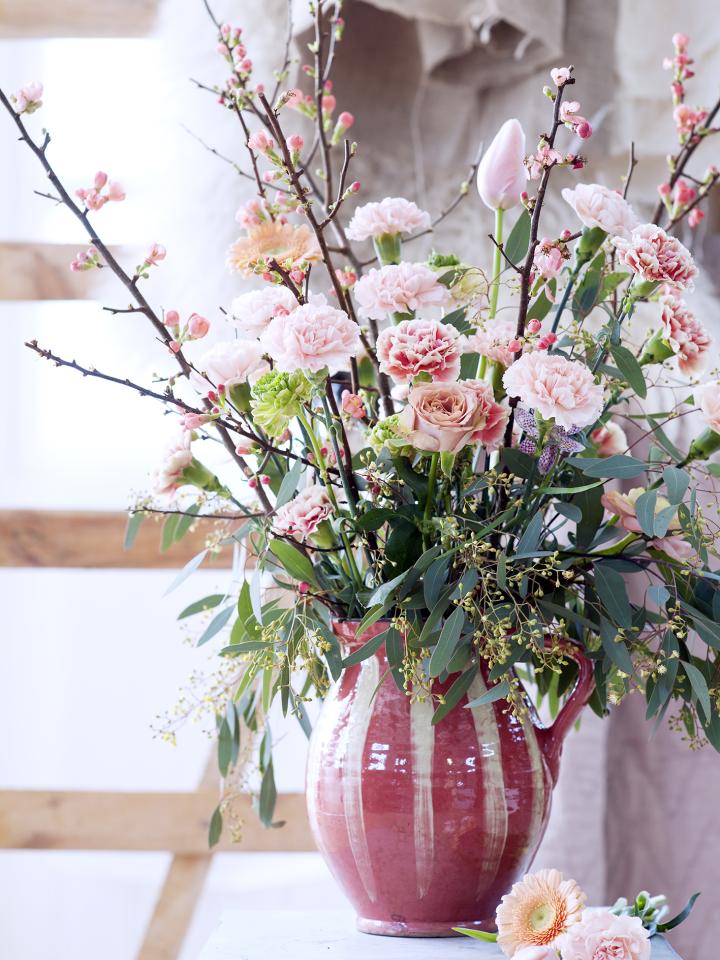
CARNATIONS IN YOUR VASE: HERE'S HOW TO KEEP cut carnations LOOKING GREAT FOR AS LONG AS POSSIBLE
Have you picked, bought or been given a beautiful bunch of carnations? Then of course you want to enjoy them for as long as possible. Good news - carnations stay beautiful in the vase for a very long time! Check out our in-depth article with tips and tricks to keep flowers beautiful in your vase for as long as possible, and take a look at our tips below for caring for carnations as cut flowers:
- Cut the stems of carnations diagonally with a sharp, clean knife
- Fill a clean vase with lukewarm water
- Add cut flower food for a longer shelf life for your carnations.
- Remove any lower leaves hanging in the water.
- Do not put the flowers next to the radiator, in a draught or in direct sunlight.
- Do not place flowers next to a fruit bowl. Ripening fruit secretes ethylene gas, which makes flowers wilt faster.
- Change the vase water regularly.
CARNATIONS: HOW AND WHEN should you PLANT them?
Want to add colour to your outdoor space with carnations planted into the ground or in pots? Then check out this comprehensive article with a step-by-step plan for planting garden plants, and see the additional tips below for planting carnations:
- Plant carnations in spring (after the periods of frost) or in autumn (before the first frost).
- Are you planting carnations into the open ground? If so, plant the carnations (or seeds) about 15-30 centimetres apart, depending on the variety. Ground-covering carnations such as rock carnations and rock carnations can be planted closer together than taller varieties such as grass carnations.
- Carnations are not demanding in terms of soil, but it is important that the soil has good drainage (i.e. that water can drain easily), so carnations do not get too wet.
CARNATIONS IN YOUR GARDEN: POSITIONING AND CARE
Planting carnations in your garden or in a pot on your balcony? Then check out the tips below for the best location and care of carnations:
- Carnations thrive best in a spot that's in full sun or semi-shade. Preferably choose a spot with at least six hours of sunlight a day.
- Fertilising is not necessary; carnations thrive in poor soil. If you do want to fertilise, do so sparingly in the spring. Too much fertiliser will make carnations bloom less beautifully and less colourfully.
- Good drainage is important: you may want to add extra compost during planting to help with this.
- Carnations are undemanding, so they're perfect for planting in a pot. Just make sure that potted carnations get enough water, but are not too wet.
- Water carnations adequately during warm, dry periods. Make sure they are not too wet to prevent root rot.
- Snails love young shoots of carnations, so take steps to protect them from creepy crawlies.
PRUNING CARNATIONS: HOW AND WHEN SHOULD YOU DO IT?
Are you enjoying having carnations in your garden or on your balcony and are wondering how and when to prune them? Check out the following info and tips for pruning carnations:
- Have your carnations finished flowering? Remove the dead flowers immediately after flowering to extend the flowering period. That way, you can ensure a first flowering in June/July and a second flowering in August/September.
- Most carnations are perennial, hardy plants. That means they survive colder, frostier periods and flower again the following year. To get them to flower the following year, it is best to prune them after the first night frost has passed (often in October). Cut the carnations back to about 5-10 centimetres above the ground.
- In spring (after the frost period is over) prune away any dead and unsightly plant parts. The carnations will then sprout again.
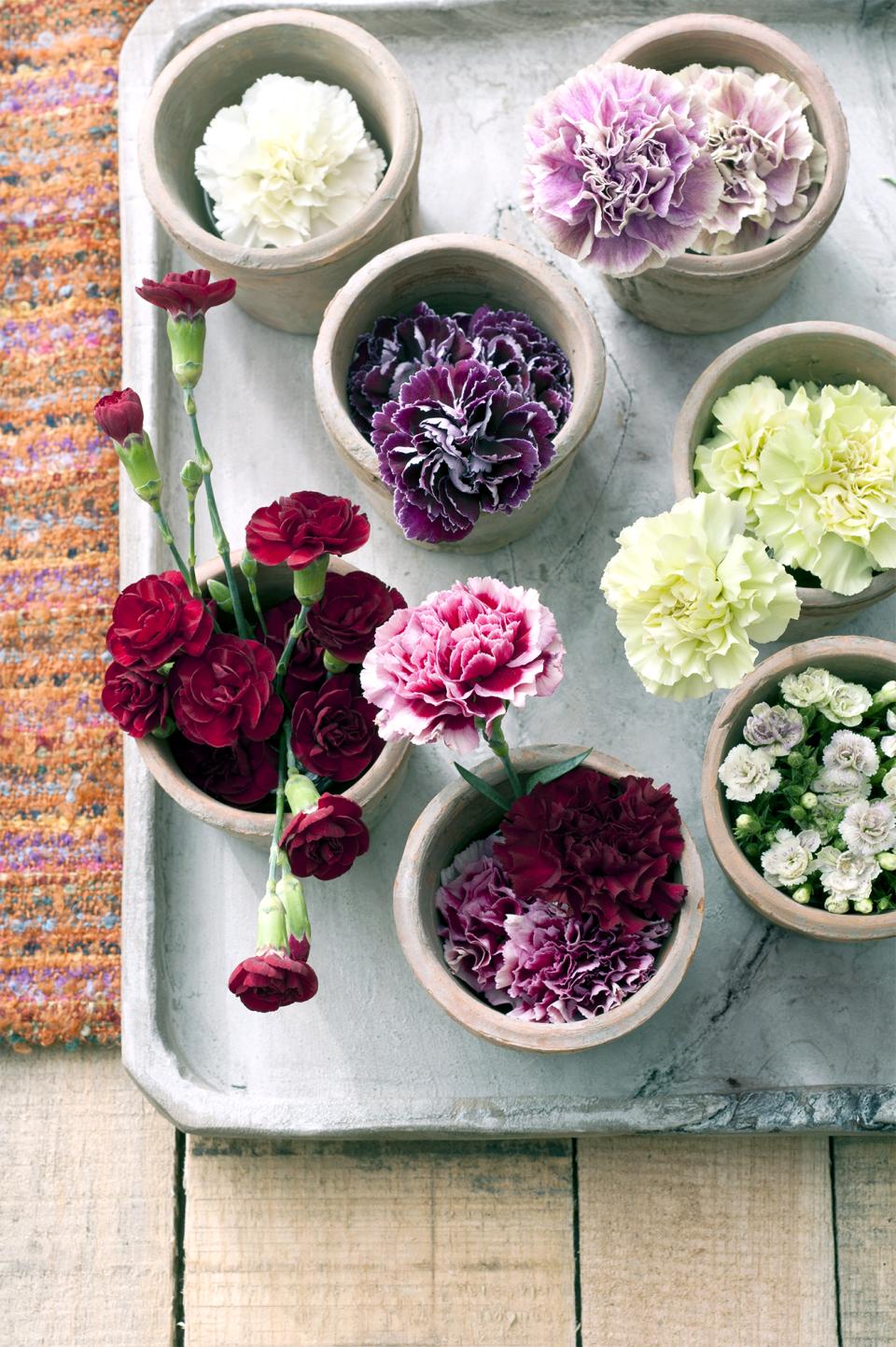
symbolism of carnations
The carnation has numerous symbolic meanings. Generally speaking, the carnation symbolises romance, love and passion. Renaissance painters of the 15th and 16th centuries did not choose this flower as a figure in their engagement scenes for nothing! Today, the carnation is an appropriate gift to show your passionate love with, or to rekindle the passion in your relationship. Besides this loving meaning, there are other meanings assigned to specific colours of carnations:
- Red carnation: the red carnation represents admiration, love and longing for someone. The red carnation used to symbolise engagement. In Portugal, the red carnation symbolises the carnation revolution in 1974.
- Pink carnation: the pink carnation refers to Mother Mary and represents appreciation and admiration. Pink carnations are often given as a Mother's Day gift.
- White carnation: the white carnation represents resistance, respect, dedication and perseverance. This meaning is associated with the royal family. In the Netherlands, Prince Bernard has worn white carnations on the left lapel of his jacket since his student days. He did the same on his birthday in 1940, during times of German occupation. On that day, the Dutch people decided to cover the statues of the Royal Family with flowers, to indicate to the occupiers that their hearts were with the royal family. The white carnation became the sign of resistance in the Netherlands during World War II. The white carnation is still worn on special occasions, such as National Veterans Day, as an expression of appreciation for veterans.
- Green carnation: in Ireland, the green carnation symbolises St Patricks Day.
WHERE DOES THE CARNATION ORIGINALLY COME FROM?
The original birthplace of the carnation can be found on the coast of the Mediterranean. The flower's popularity goes way back, with the Romans were making head wreaths and fresh cologne from the flower. Carnations also appears regularly in religious paintings, as a symbol of St Mary and as a symbol of Christ's suffering. The Latin name for carnation is Dianthus, a derivative of Dios (God) and anthos (flower). A divine flower, in other words!
ARE CARNATIONS TOXIC?
Carnations are generally considered non-toxic to humans, but can cause mild symptoms in cats dogs and other domestic animals when eaten. Ingestion by cats, for example, can cause vomiting, diarrhoea and stomach upset. Always consult a vet if your pet has consumed carnations.
